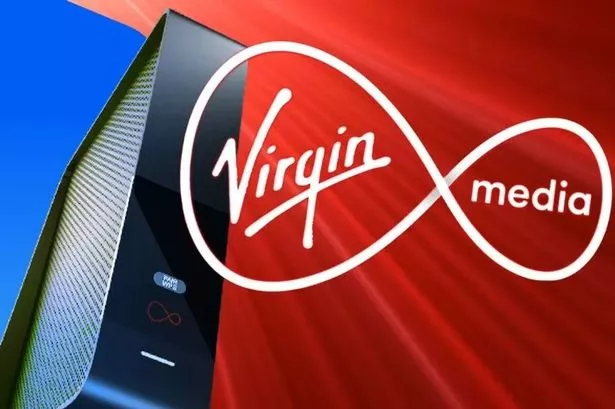Virgin Media Limited Price Hikes: Broadband and TV in 2025

The Impending Price Adjustment
Virgin Media Limited has announced a substantial price increase. This change will start in 2025. This announcement has caused concern among customers. Subscribers are worried about higher monthly bills for their broadband and TV packages.
The choice to raise prices comes from higher operational costs. A need also exists to keep investing in network infrastructure. Virgin Media Limited states that these increases are necessary to maintain high service quality. They also help pay for ongoing tech improvements and better customer options.
The timing and structure of these price hikes have raised questions. People are concerned about affording and the value of Virgin Media’s services. This is happening in a competitive telecoms market.
Understanding the Virgin Media Limited Price Increase Structure
Virgin Media’s approach to implementing the price increase is not uniform across its customer base. The company has created a two-level system. This system separates current customers from those who have just joined or renewed their contracts. This segmented strategy reflects a shift in pricing policy that aligns with new regulatory guidelines.
Subscribers who made agreements with Virgin Media before January 9, 2025, will see a price change. We will calculate this change using a specific formula. This formula combines the Retail Price Index (RPI) inflation rate with a fixed percentage. Specifically, these customers will see their monthly charges rise by the RPI rate plus an extra 3.9%.
People who became Virgin Media customers or renewed their contracts after January 9, 2025, will experience a simpler increase. However, this increase may be steeper. These subscribers will see a flat rise of £3.50 added to their monthly bills starting from April 2025.
This two-part approach to broadband service price changes shows Virgin Media’s effort to grow revenue while keeping customers. It also reflects the company’s response to evolving regulatory requirements aimed at providing greater transparency and knowledge in pricing for broadband and telecommunications services.
Timing and Implementation of the Price Hike
Virgin Media Limited plans to raise its broadband packages prices in April 2025. This timing is smart because many service providers change their rates then.
This alignment with the financial year helps Virgin Media. It allows them to look at the latest economic indicators and inflation. This information is important when they set their prices.
Customers affected by the RPI-linked increase will see the exact percentage based on the January 2025 RPI rate. The Office for National Statistics usually announces this rate in February of that year. This means that these subscribers will have a short time between learning about their price increase and seeing it in their April bills.
Customers subject to the flat £3.50 increase will have more certainty about the change to their monthly charges. However, this fixed amount could mean a bigger percentage increase for people on lower-tier broadband plans. We compare this to those with more expensive broadband packages and bundles.
Virgin Media has promised to clearly share important broadband changes with all affected customers. They will provide detailed information about how these changes will impact individual accounts.
The company will send out notifications before the April start date. This will give customers time to look over their options and make smart choices about their service plans.
The Impact on Different Customer Segments
Virgin Media’s broadband price increase strategy has two parts. This means its effects will differ greatly for different customer groups. This different approaches has implications not only for individual subscribers but also for the company’s overall customer retention and acquisition strategies.
For long-time customers who signed up before January 2025, the RPI-linked increase may lead to a bigger broadband price hike. This depends on the current inflation rate. These customers may feel particularly affected, as they could face a more substantial percentage increase compared to newer subscribers.
Recent customers and those who just renewed their broadband contracts will see an extra £3.50 on their monthly bills. This gives clarity, but it may mean a bigger part of the total bill for basic package users than for high-end subscribers.
Business customers and those on special broadband plans may have different adjustment rates. Virgin Media has said that some groups, like those on social tariffs, will not face these increases. This nuanced approach reflects an attempt to balance revenue goals with social responsibility and being market competitive.
The different effects on customer groups may cause various reactions. These can include acceptance and loyalty, or contract reviews and service cancellations. Virgin Media will need to carefully manage these diverse reactions to maintain its market position and customer base.
Justifying the Price Increase
Virgin Media Limited has given several reasons for the upcoming price increase. They say that keeping their services improved is necessary. The company cites increasing operational costs as a primary driver behind the decision to raise prices.
One of the key factors highlighted is the substantial investment required to maintain and upgrade broadband network infrastructure. Virgin Media has said, it needs to spend a lot of money. This is because the demand for fast K internet and better TV services is increasing. This spending is necessary to keep up with new technology and what customers want.
The company also points to the rising costs of content acquisition, particularly for its TV packages. With streaming services and traditional broadcasters competing fiercely for premium content, the expenses associated with securing attractive programming for customers have escalated.
Virgin Media Limited Regulatory Context and Compliance
Virgin Media has announced a price increase. This comes as the UK telecommunications sector faces new regulatory requirements. Recent changes implemented by Ofcom, the industry regulator, have significant implications for how service providers can structure and communicate price adjustments to their customers.
One important change in regulations is the ban on mid-contract price increases. Inflation and an extra percentage caused these increases. This new rule started on January 17, 2025. It aims to give consumers more clarity about their contracts.
In compliance with these regulations, Virgin Media has adapted its pricing strategy for new and renewing customers. The £3.50 increase for contracts signed after 9th January 2025 follows Ofcom’s rule. This rule says providers must show exact price changes in pounds and pence when selling.
Virgin Media can still use the RPI plus a fixed percentage for current customers. This applies to contracts made before the regulatory changes.
The company must clearly explain how these increases may affect customers. They should also offer options. Customers have the right to leave their contracts without penalty if they do not like the new terms.
Virgin Media’s differentiated approach to price increases reflects its efforts to balance regulatory compliance with business objectives. The company must follow these new rules closely. This will help avoid possible penalties in the UK’s broadband market. It also needs to keep its competitive edge.
Customer Communication and Transparency
With the upcoming price changes, Virgin Media Limited has promised to communicate clearly and openly with its broadband customers. The company knows it is important to give clear and timely information. This helps subscribers understand the changes and what they mean.
Virgin Media has outlined a multi-faceted communication strategy to inform customers about the impending price increases. This includes direct notifications via email, post, and through customers’ online accounts. The company plans to give personalized information. This will demonstrate how each broadband subscriber’s bill changes based on their package and contract terms.
Virgin Media will post the RPI rate on its website. This will happen as soon as the rate is available. This is for customers affected by the RPI-linked increase.
The company is also enhancing its customer service channels to handle inquiries and concerns related to the price changes.
Comparison with Industry Trends
Virgin Media’s choice to raise broadband prices in 2025 is not happening alone. Part of a larger trend exists in the UK telecom industry.
Many of Virgin Media’s competitors have raised their monthly prices in recent years. They often give similar reasons. These include rising operational costs and the need to invest in infrastructure. However, the specific approaches and magnitudes of these increases vary across providers.
Some broadband competitors have chosen to use annual increases based on the Consumer Price Index (CPI) instead of RPI. This usually leads to smaller adjustments.
As consumers pay more attention to prices and their broadband options, they may switch broadband providers more often. This trend of regular price increases could make them focus on value, not just cost.
Customer Options and Alternatives
In response to the announced price increases, Virgin Media customers will be faced with several options and potential alternatives. It is important for subscribers to understand these choices. They may be thinking about their current broadband plans because of the upcoming changes.
- If customers do not like the new broadband pricing, they can look at other packages/broadband offerings from Virgin Media. The company offers various plans at different prices. Downgrading to a simpler package may help reduce the effects of the increase.
- Another possibility is to negotiate with Virgin Media directly. The company has a pricing strategy, but there may be room to talk. This is especially true for loyal or high-value customers. This could involve exploring loyalty discounts or bundling ultrafast speeds services to achieve better overall value.
- Customers with contracts signed before the new Ofcom rules may be able to leave their agreements without a penalty. This is true if they think the price increase is too high. This option provides leverage for negotiation or the freedom to explore services from other providers.
For those considering a switch, we are Broadband Freedom have a wide range of providers with great offers to choose from.
The Broader Impact on the UK Telecoms Market
Virgin Media’s price increase is not just a one-time event. It is part of a bigger story affecting UK telecoms and broadband connections. The ripple effects of this decision extend beyond the company’s immediate customer base, influencing market dynamics, consumer behaviour, and potentially even regulatory approaches.
One immediate impact could be a shift in competitive positioning within the market. As Virgin Media changes its prices, other providers may find chances to attract customers who value price. They might also adjust their own services based on Virgin’s new prices.
The move could also accelerate the trend towards more flexible, contract-free services such as pay-as-you-go options.
Conclusion – Virgin Media Limited
Virgin Media’s announcement of price increases for 2025 marks a significant moment in the UK’s telecoms landscape. The company states that it needs this decision for better investment and service. However, it creates challenges and choices for consumers in a more complex market.
The various approaches to existing and new customers reflects both regulatory changes and strategic considerations. It underscores the delicate balance providers must strike between revenue growth, customer retention, and regulatory compliance.
Customers need to carefully review their current essential broadband services, their needs, and the options available in the market. The different effects on customer groups may cause a range of reactions. These can include acceptance or looking for other choices.
In a larger sense, this action by Virgin Media could change the competition in the UK telecom market. It could change pricing strategies in the industry. This might lead to more discussions about affording service quality and the future of digital infrastructure in the UK.
As the start date gets closer, everyone will watch how Virgin Media carries out these changes. They will also pay attention to customer reactions and the possible effects on the industry. The outcome will likely affect Virgin Media’s future. It will also change the UK’s broadband and TV services.


